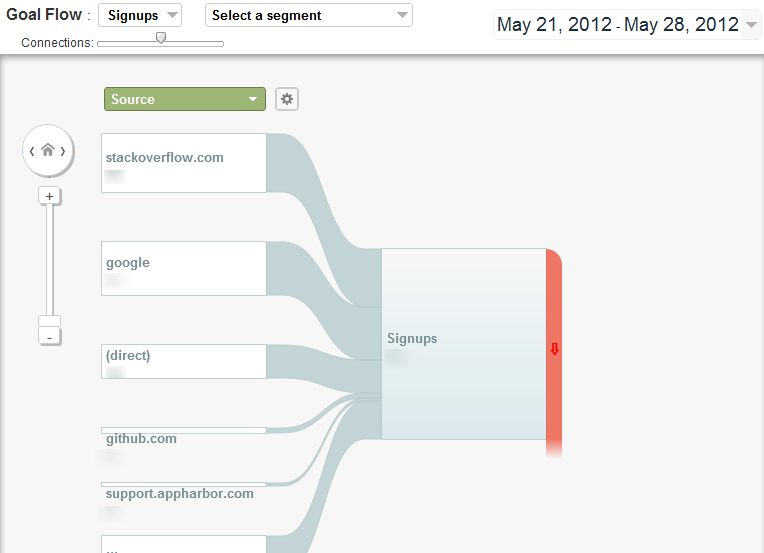The Single Strategy To Use For Google Analytics Event Tracking
Table of ContentsThe Buzz on Google Analytics Event TrackingIndicators on Google Analytics Event Tracking You Should KnowSome Known Questions About Google Analytics Event Tracking.The Definitive Guide for Google Analytics Event TrackingExcitement About Google Analytics Event TrackingThe Ultimate Guide To Google Analytics Event Tracking

If you're going to set up occasion tracking manually, then you're going to need to include some added code to the elements you intend to gather data from. The code you're going to collaborate with will certainly look something such as this: There are four elements within that code bit that you're going to need to define yourself: event, Group, occasion, Action, event, Tag and occasion, Worth.
As you can see, 2 of these are needed (group and action) while label and value are optional. All of it depends upon the sort of info you desire relayed back to Google Analytics when an individual clicks the defined aspect (Google Analytics Event Tracking). It will be a lot easier to define these parts if you evaluate your site and make a decision which elements/actions you wish to track
How Google Analytics Event Tracking can Save You Time, Stress, and Money.
Now, you'll be asked to specify the and and you'll want to pick from the drop-down food selection that shows up when you click on. This will bring up the exact same event tracking components we took a look at earlier, which you'll need to fill in. As soon as you have actually specified these, you can move down to the second box and choose the trigger that will terminate your tag.
On the next display, you'll likewise have an area for calling your trigger and, if you click the box, you'll see a listing of the various triggers you can select. In this instance, we wish to select and after that select the choice below. You'll set the trigger to just terminate when a component is clicked with an URL that has the.
Every website talks. Prior to information analytics, we could not listen to the voices of our websites. Yet exactly how do you know what your web site is saying? Basic - Event tracking! Occasion tracking provides you an image of just how users involve with your site and business (Google Analytics Event Tracking). Do you want to know more? After that, read on as we discover everything you require to understand, including what it is, why you must track events, just how to manage occasions data, and various other appropriate FAQs you might have.
The Main Principles Of Google Analytics Event Tracking
You can switch in between your event categories, activities, and labels in the Leading Occasions report. The Occasion Pages report presents the web pages where events are activated.
Events in Google Analytics have four major components. Google Analytics makes use of these codes to track user communications and group them into event records (Google Analytics Event Tracking).
Then, choose "Variables" > "Configure". A listing of the parameters you can track on your web site is on the right. Under Clicks, Forms, and Video clips, double-check each criterion. After inspecting all necessary fields, you can click "X" to close the window and return to the Overview menu on the.
Some Ideas on Google Analytics Event Tracking You Should Know
If you have not done so, you might need to establish up a variable in the Google Analytics Settings box. After this, enter your GA monitoring ID in the Tracking ID area.
To do this, adhere to the next series of actions: After configuring the fields, choose the "Triggering" area. When configuring your brand-new trigger, click the "+" switch, then the "pencil" button, after that pick your trigger type.
Google Analytics Event Tracking Can Be Fun For Everyone
When it comes to understanding which sections and components are directing clients with your conversion funnel, you still will not know. So, without occasion monitoring, GA records will only count check outs as single-page sessions, also if individuals invest a great deal of time on one web page and involve with it substantially (and a bounce).
However how does event monitoring achieve this?Single-page sessions understood as bounces begin and wrap up on the same page. Without occasion monitoring, GA will identify a user's check out as a bounce if they don't navigate to an additional page, regardless of just how they communicate with it. As an example, a video-rich web page can have a higher bounce rate if events are not tracked.
Examine This Report on Google Analytics Event Tracking
Nonetheless, for GA to take event hits into account when gauging bounce prices, you should pick "Non-interaction occasion" as "False" during the GTM setup. Setting "occasion objectives" with event activity is an outstanding method to monitor Source user activities read this article you value extremely, such as new lead submissions or click a phone call to action.